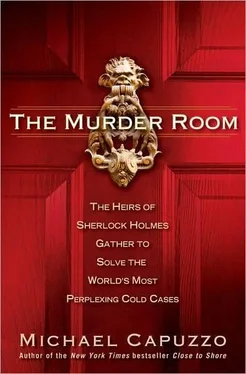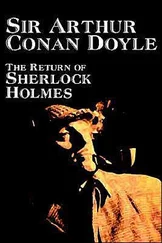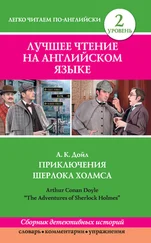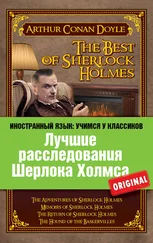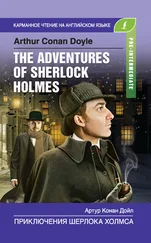As Bender crossed the lobby, he hardly had time to recall his simmering resentment of the AAFS-he could speak before them but not join without a college degree-when a sturdy woman with strong hands flashed a friendly smile and a broad Oklahoma hello. Big, round horn-rimmed glasses magnified soft eyes that Hollywood would have picked to serve homemade pie. The look was deceiving. Betty Pat Gatliff was the grande dame of forensic artists. She’d helped pioneer the profession worldwide. She’d done a facial reconstruction of King Tut published in Life magazine. Working with her forensic teammate, legendary anthropologist Clyde Snow, she’d rebuilt the skulls of seven of the unidentified victims of serial killer John Wayne Gacy.
Bender and Gatliff had met through the “Bone Detective” Wilton Krogman, who had worked with Eliot Ness and mentored the leading figures in what was once called “Skeletal ID.” Many years after his work on the Boy in the Box case, Krogman had introduced Bender to the facial skin thickness charts that had been developed since the nineteenth century. He had inscribed his classic book, The Human Skeleton in Forensic Medicine, to Frank Bender, “A fellow seeker in the vineyard of the forensic sciences.”
The bone cobblers exchanged a friendly hug, then went off to sit in the coffee shop alone, de rigueur for their grisly exclusive club.
Bender described the Nauss case and turned his palms up. “Betty, I need help,” he said. “I don’t have enough information about the subject.” Gatliff was talking about the challenge of rebuilding a Florida murder victim’s skull, missing the entire maxilla, for goodness sakes, when a tall, gaunt man in a blue suit appeared at the table and exclaimed, through a wisp of menthol smoke, “Betty!”
“Richard!” Gatliff said warmly. She gestured to her fellow artist. “Frank Bender, let me introduce you to my good friend Richard Walter. Richard is a forensic psychologist and criminal profiler.”
Bender gawked at the thin man’s long, withered face. He had the formal manners of a Victorian gentleman, but his small blue eyes glittered with irony. He hadn’t seen such a strange man since he caught The Fall of the House of Usher on cable.
Walter’s cold eyes appraised the small, muscular artist with his tight black T-shirt and cocksure grin-a face like James Dean on laughing gas. The forensic psychologist pushed his large round black spectacles down on his nose and said sardonically, “Oh, my dear boy, I see we’re overdressed.”
Bender howled with laughter. A guy who put himself out there like that, he thought, had to be a genius to back it up. Bender’s laughter came from deep in his gut, a bold, infectious sound.
“Why don’t you join us? ” the artist said with his natural eagerness, as effusive as a twelve-year-old boy. “We’re talking about cases.”
Walter smirked and further lowered the black spectacles on his aquiline nose. “I hope your talent exceeds your couture,” he said.
Bender laughed again even louder, ringing notes of pure joy. Gatliff grinned. Heads turned in the coffee shop.
Walter flushed to the flinty edge of his chin. It was terrible, he thought, the unwanted attention that TV crime shows had drawn to classic forensic science. He wanted to talk to Betty, not this straggler, clearly not a member of the academy. “Typical R. Walter, I became covertly hostile and sarcastic,” he recalled. “But Frank stuck like glue. I couldn’t get rid of the guy, and he laughed at my jokes. How can you hate anybody who laughs at your jokes?”
“What are you working on, Rich?” Walter bristled as he sat down. No one called him Rich.
“A few of us have been asked to do a profile of Jack the Ripper on the one hundredth anniversary of the murders, using modern profiling techniques,” Walter said. He lit a cigarette, shook the match out with two fingers, and leaned back to take a smoke.
“We’ll be presenting at the Home Office in London,” he said, going on, raising an eyebrow with good humor. “I had never looked at the case before, but it’s really quite obvious who the Ripper was. They got it right in the beginning but didn’t know why.”
Bender ogled the thin man. He had never met anyone like him. Lowering his head in his earnest fashion, Bender described his struggles doing the Nauss bust for the U.S. Marshals.
“I don’t know enough about the killer to be sure,” he said.
“Tell me about the murder,” Walter said.
Nauss, Bender said, had rejected his middle-class childhood to become a leader of the violent Warlock motorcycle gang. He described Nauss’s murder of Landy in detail.
“The problem is I don’t know enough about him to depict how he looks. The photographs are a decade old, and I don’t know his personality or habits. Is he married or single? Still slim or spreading with middle age? How does he eat? Does he exercise?”
Walter raised his eyebrow, signaling his interest. “I can tell you a bit about him. I’ve seen hundreds of cases like this, many involving bikers. He’s tremendously macho, aggressive, with an exaggerated sense of importance. He’s very concerned about image. He dispatched the body brutally, like tossing away trash, and simply for reasons of power, not sex or fantasy or Satanism or any other such nonsense. He’s just tired of her and wants to move on.”
Bender’s eyes gleamed like go lights. “Rich, maybe you and I could work on this case together.”
Walter frowned at Bender and leaned back, eyeballing him as if from a safe distance. He took a draw on his Kool and let the silence develop.
Bender leaned forward into the vacuum, speaking faster and with great enthusiasm.
“Rich, why don’t you come talk to the marshals tonight? I can set it up.”
“I’m afraid not, dear boy. It’s well known I won’t have my libations at the hotel bar interrupted.”
Bender laughed again. Walter took a long draw on a cigarette and turned inward. Bender is a very intense character, very intense, bright but off the wall, he thought. What the hell is he all about? Oh, well, I’ll never see him again.
At six the next morning, Walter shot out of a deep sleep in his hotel room. The telephone was ringing.
“Hi, Rich!” Bender sounded like he’d had five cups of coffee.
Oh, God, Walter thought. What have I gotten myself into now? He sat on the edge of the bed and reached for a Kool.
“The marshals want to meet with you today!”
Walter went to breakfast at the Downhome Diner with Bender and Tom Rappone, head of the U.S. Marshals Service fugitive task force in Philadelphia, to discuss the Nauss case. Bender played a trick on the somber psychologist. “You’ve got to try scrapple, Rich. It’s a classic Pennsylvania delicacy. You’ll love it.”
“What is it?”
“Meat.” The artist grinned.
Walter looked down at the odiferous brown extrusion of last-chance pork parts, snarled, and pushed his plate a foot away as Bender exploded in schoolyard laughter. Walter quietly took in black coffee and a cigarette, turning a hard flat gaze on the boisterous clown who seemed to be forcing his way into his life. “I was not pleased.”
At four that afternoon, the thin man sat in a conference room at the marshals’ office at Sixth and Market streets with Bender. With them at the table were Rappone and two other deputies.
“Listen up,” Rappone said.
Walter looked down at a yellow pad filled with scribbled notes, and cleared his throat.
“I’ve conducted a brief crime assessment of the Nauss murder,” he said. “Nauss was a closet case in the motorcycle gang in that he was very high up, but he also wanted to be in the mob, a promotion as it were. He had a middle-class background, and he’s going to be a little brighter than your average semi-organized PA killer and he’s going to be clever. He’s going to clean himself up a little bit, be not as scruffy; he’ll have more options available to him.”
Читать дальше
